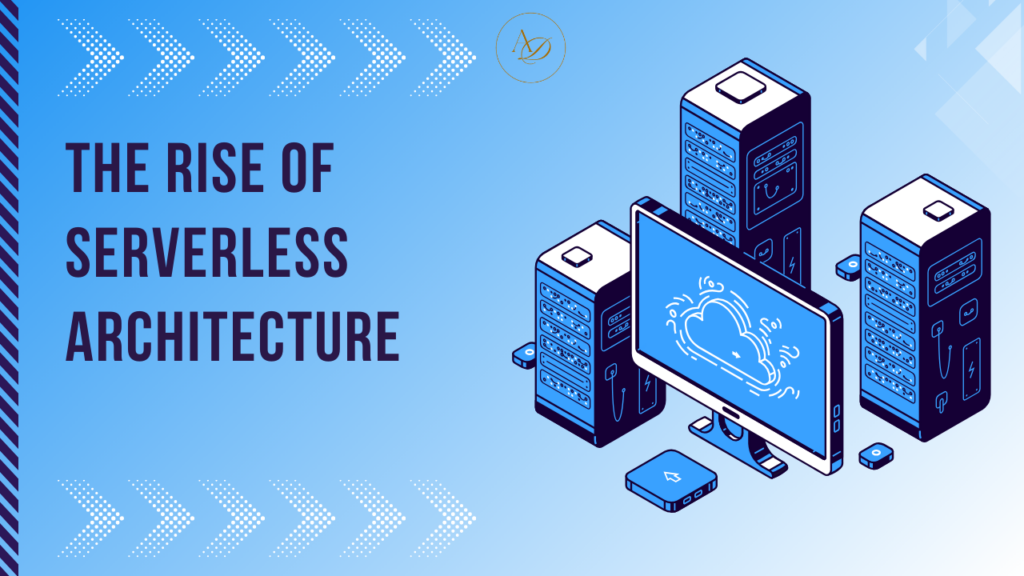In the constantly evolving landscape of software development, staying updated with cutting-edge technologies is a must. One of the most transformative approaches in recent years has been serverless architecture. With promises of reduced operational overhead, high scalability, and cost savings, serverless architecture is paving the way for a more efficient future in application deployment. In this blog, we will explore the intricacies of serverless architecture, the benefits it brings, common use cases, challenges to consider, and best practices for implementing it in a modern tech stack.
What is Serverless Architecture?
Serverless architecture refers to an event-driven execution model where the cloud service provider manages all infrastructure tasks like server provisioning, scaling, and maintenance. Unlike traditional server-based models, developers focus purely on writing code while a cloud provider, such as AWS, Azure, or Google Cloud, takes care of infrastructure management.
In a serverless setup, you deploy functions that get executed in response to specific triggers—meaning you only pay for the compute time when your functions run. This “pay-as-you-go” model is one of the key differentiators that make serverless so attractive.
Key Serverless Components:
- Function as a Service (FaaS): Services like AWS Lambda, Azure Functions, or Google Cloud Functions. FaaS allows developers to run individual functions in response to events.
- Backend as a Service (BaaS): Pre-built backend services provided by cloud vendors for managing tasks like authentication (e.g., Firebase Auth), storage, and databases.
- API Gateway: Acts as an intermediary between client requests and backend services, providing essential features like request routing, rate limiting, and security.
- Cloud Storage: Serverless cloud storage, such as AWS S3, for hosting static assets.
Benefits of Serverless Architecture
- Cost Efficiency:
- In traditional hosting, you need to pay for servers even during downtime. With serverless, you are charged only when your functions are actively running, leading to significant cost reductions.
- Auto-Scaling:
- Serverless platforms handle scaling automatically in response to incoming traffic. You no longer have to worry about predicting server load or manual scaling.
- Increased Productivity:
- Developers can focus on business logic, instead of spending time on server management, which boosts development productivity and allows for faster iteration.
- Reduced Operational Complexity:
- By delegating infrastructure management to a cloud provider, businesses experience reduced DevOps overhead.
Common Use Cases for Serverless Architecture
- Web and Mobile Backends:
- Build scalable APIs using AWS Lambda and API Gateway without provisioning any backend infrastructure.
- Real-time Data Processing:
- Serverless functions are ideal for processing streams of real-time data, such as using AWS Lambda to process Kinesis streams.
- Scheduled Tasks:
- Automate periodic tasks like data backup, reporting, or server maintenance without relying on traditional cron jobs.
- Chatbots and Voice Assistants:
- Serverless is also widely used for chatbots, integrating AI services that run seamlessly without needing a backend server.
Serverless Architecture vs. Traditional Architecture
- Server Management: In traditional systems, developers or administrators have to set up and maintain servers, while in serverless, the cloud provider takes care of everything.
- Scaling: Traditional architectures require complex setups to scale horizontally or vertically, whereas serverless handles scaling automatically and instantly.
- Latency: Serverless systems may face some initial latency, known as “cold start,” particularly for functions that haven’t been invoked recently.
Challenges with Serverless Architecture
- Cold Start Issues:
- Cold starts refer to the latency when functions are invoked after being inactive. Cold starts can lead to delayed response times, especially in applications that require low latency.
- Vendor Lock-In:
- Relying on a specific cloud provider’s serverless services can make migration challenging. Each cloud platform has its own APIs and configurations, which may result in vendor lock-in.
- Limited Execution Time:
- Serverless functions are designed for short-lived tasks, typically restricted to 5-15 minutes. For long-running processes, traditional approaches might be more suitable.
- Monitoring and Debugging:
- Debugging a serverless architecture can be challenging due to the distributed nature of services. Centralized logging and monitoring tools like AWS CloudWatch are crucial for visibility.
Best Practices for Implementing Serverless Architecture
- Design for Statelessness:
- Serverless functions are stateless by design, which means no data is preserved between function invocations. Use databases like AWS DynamoDB or caches for persistence.
- Minimize Cold Start Time:
- Opt for minimal package sizes and efficient initialization to reduce cold start latency. Use provisioned concurrency in AWS Lambda to keep your function “warm.”
- Efficient Function Composition:
- Keep serverless functions small and focused. Apply the Single Responsibility Principle—each function should perform a distinct task. This helps improve performance and maintainability.
- Use Serverless Frameworks:
- Frameworks like Serverless Framework, AWS SAM, or Terraform help with managing and deploying serverless applications efficiently, handling the complexity of configurations.
- Security:
- Implement strict IAM roles and policies to ensure your serverless functions only have the permissions they need. Avoid hardcoding secrets; instead, use services like AWS Secrets Manager.
Real-World Example: Netflix
Netflix is a prime example of utilizing serverless architecture effectively. By leveraging AWS Lambda, Netflix can process and personalize billions of daily recommendations for its users in a cost-efficient manner. The auto-scaling nature of Lambda allows Netflix to manage high traffic volumes smoothly without worrying about infrastructure bottlenecks.
Conclusion
Serverless architecture is transforming the way applications are built, deployed, and managed. It has empowered developers to offload complex infrastructure tasks and focus purely on the business logic, reducing costs, and accelerating innovation. While it has its challenges—like cold starts, limited execution, and potential vendor lock-in—strategic use of serverless architecture can yield significant benefits, especially for applications needing dynamic scalability and rapid time-to-market.
Whether you are building microservices, APIs, or real-time data processors, serverless architecture offers a modern solution that fits the requirements of cloud-native applications. Understanding the nuances of serverless, its benefits, and challenges, and how to best implement it will help you make an informed decision when considering it for your projects.
Take Your Next Steps with Serverless
Interested in exploring how serverless architecture can fit into your tech stack? Start small—experiment with AWS Lambda or Azure Functions and gradually transition parts of your application to serverless. As serverless adoption continues to grow, staying ahead of the trend will not only improve your development workflow but also enhance your application’s scalability and efficiency.
Suggested Readings:
- “The Rise of Low-Code and No-Code Platforms” – Learn how serverless is driving innovations in the low-code space.
- “Caching Strategies for High-Performance Backends” – Discover how caching can complement serverless setups for better performance.
- “GraphQL vs REST: Which is Better for Frontend Development?” – Consider how serverless backends integrate with different API paradigms.
- “How AI is Transforming Software Development” – Understand the role of serverless in modern AI-driven applications.
Let’s Connect: Have you tried serverless architecture in your projects? Let us know in the comments below your experiences, challenges, or tips for making the most of serverless in cloud-native applications.
connect with me on Linkedin




